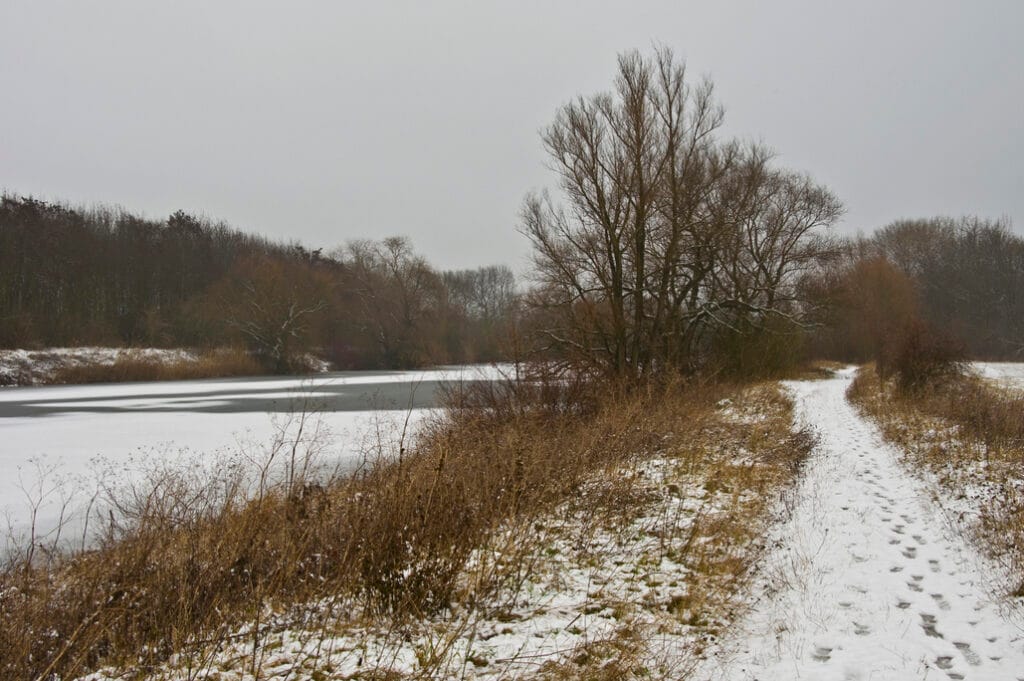During winter, it’s crucial to ensure your home and office are ready to withstand the challenges of freezing temperatures and harsh weather conditions. This essential cold weather readiness guide will help you prepare your property for winter, limit potential damage, and stay safe during cold snaps.
Winterizing The Exterior
Gutter Maintenance
- If you haven’t already cleaned your gutters, try to complete the task on the next nice day available to you. A clean gutter prevents clogging and allows melting snow to drain properly.
- For less maintenance, consider installing gutter guards made of stainless steel or PVC to minimize future cleanings.
Seal Entry Points
- Inspect the exterior of your property for small cracks or openings.
- A quick application of spray foam insulation will close up these gaps. Don’t forget to apply weather stripping and caulking around doors and windows to keep cold air out and warm air in.
Protect Outdoor Fixtures
- Cover outdoor spigots with insulated faucet covers to prevent freezing and potential pipe bursts. While you’re at it, make sure all hoses are free of water and stored inside.
- Store outdoor furniture and grills in a garage or basement, or use protective covers if storage isn’t available.
Interior Preparations
Insulation and Heating
- Add extra insulation to attics, basements, and crawl spaces to improve energy efficiency.
- Have your heating system serviced as soon as possible to ensure it’s working optimally.
Thermostat Management
- Install a programmable thermostat to customize your heating schedule.
- Set the temperature to 68°F when you’re at the home or office and lower it when you’re away.
Pipe Protection
- Insulate exposed pipes, especially those near exterior walls, with pipe wraps or even old towels secured with duct tape.
- For pipes in unheated areas, consider using heat tape or heat cables.
Emergency Preparedness
Winter Storm Survival Kit
Consider preparing a kit that includes the following. You may even want a kit for the car.
- Mobile phone, charger, and extra batteries
- Blankets or sleeping bags
- Flashlight with extra batteries
- First-aid kit
- High-calorie, non-perishable food
- Extra warm clothing
Power Backup
Depending on where you live, you might want to invest in a reliable backup power source, such as a portable generator, to keep essential systems running during outages.
Safety Devices
- Install smoke detectors and carbon monoxide detectors with battery backups. By the way, did you know that smoke detectors have a lifetime of 10 years? If yours were installed more than ten years ago, consider replacing them.
- Test them every two months and change batteries twice a year. The newer smoke alarms include 10 year batteries.
Limiting Potential Damage
Prevent Frozen Pipes
When temperatures drop significantly there are a few things you can do to protect your property.
- Open cabinet doors under sinks to allow warm air circulation
- Let faucets drip slowly to prevent freezing
- Keep the thermostat set to at least 55°F, even when away
Ice Dam Prevention
Ensure proper attic insulation and ventilation to prevent ice dams from forming on your roof.
Snow Removal
Keep a snow shovel near each door for quick cleanups. Consider investing in a snowblower for larger areas, and have it serviced before winter.
By following these guidelines, you can significantly reduce the risk of winter-related damage to your home and ensure the safety and comfort of your household during the cold months. Remember, preparation is key to weathering winter storms and freezing temperatures with minimal disruption to your daily life.

